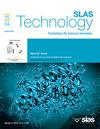Exosomal miRNA-188–3p derived from cancer-associated fibroblasts promotes ferroptosis in cervical cancer: Medical biothermal image analysis
IF 3.7
4区 医学
Q3 BIOCHEMICAL RESEARCH METHODS
引用次数: 0
Abstract
The study aimed to explore the potential mechanism of action of extracellular miRNA-188–3p derived from CAFs in cervical cancer. In this study, CAFs were isolated from patients with cervical cancer, and exosomes were extracted by ultrafast centrifugation method to detect the expression level of miRNA-188–3p in exosomes. Subsequently, the exosomes were co-cultured with cervical cancer cells, and the temperature changes of the cells were monitored by medical thermal image analysis technology to evaluate the metabolic activity of the cells. Western blot and qPCR were used to detect protein and mRNA expression levels related to iron metabolism in order to investigate the role of miRNA-188–3p in iron metabolism of cervical cancer cells. The results showed that the expression level of miRNA-188–3p in exosomes derived from CAFs was significantly higher than that of exosomes derived from normal fibroblasts. Medical thermal image analysis showed that cervical cancer cells treated with miRNA-188–3p showed higher metabolic activity, manifested by increased temperature. The results of cell proliferation test, scratch test and Transwell invasion test all showed that miRNA-188–3p promoted the proliferation, migration and invasion of cervical cancer cells. Further molecular mechanism studies showed that miRNA-188–3p regulates iron homeostasis in cervical cancer cells by targeting genes related to iron metabolism, thereby promoting cell proliferation and invasion.
来自癌症相关成纤维细胞的外泌体miRNA-188-3p促进宫颈癌中的铁下垂:医学生物热图像分析
本研究旨在探讨源自cas的细胞外miRNA-188-3p在宫颈癌中的潜在作用机制。本研究从宫颈癌患者中分离出CAFs,采用超快离心法提取外泌体,检测miRNA-188-3p在外泌体中的表达水平。随后,将外泌体与宫颈癌细胞共培养,利用医学热图像分析技术监测细胞的温度变化,评价细胞的代谢活性。采用Western blot和qPCR检测铁代谢相关蛋白和mRNA的表达水平,探讨miRNA-188-3p在宫颈癌细胞铁代谢中的作用。结果表明,CAFs来源的外泌体中miRNA-188-3p的表达水平显著高于正常成纤维细胞来源的外泌体。医学热像分析显示,经miRNA-188-3p处理的宫颈癌细胞代谢活性较高,表现为温度升高。细胞增殖试验、划痕试验和Transwell侵袭试验结果均显示miRNA-188-3p促进宫颈癌细胞增殖、迁移和侵袭。进一步的分子机制研究表明,miRNA-188-3p通过靶向铁代谢相关基因调控宫颈癌细胞铁稳态,从而促进细胞增殖和侵袭。
本文章由计算机程序翻译,如有差异,请以英文原文为准。
求助全文
约1分钟内获得全文
求助全文
来源期刊

SLAS Technology
Computer Science-Computer Science Applications
CiteScore
6.30
自引率
7.40%
发文量
47
审稿时长
106 days
期刊介绍:
SLAS Technology emphasizes scientific and technical advances that enable and improve life sciences research and development; drug-delivery; diagnostics; biomedical and molecular imaging; and personalized and precision medicine. This includes high-throughput and other laboratory automation technologies; micro/nanotechnologies; analytical, separation and quantitative techniques; synthetic chemistry and biology; informatics (data analysis, statistics, bio, genomic and chemoinformatics); and more.
 求助内容:
求助内容: 应助结果提醒方式:
应助结果提醒方式:


